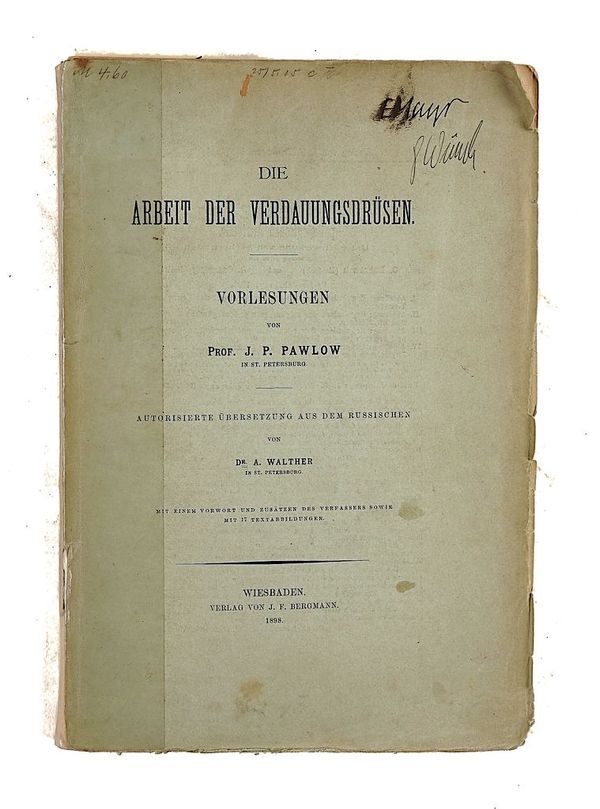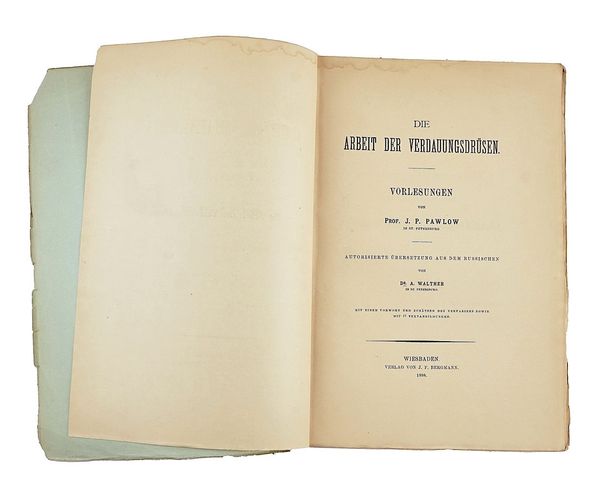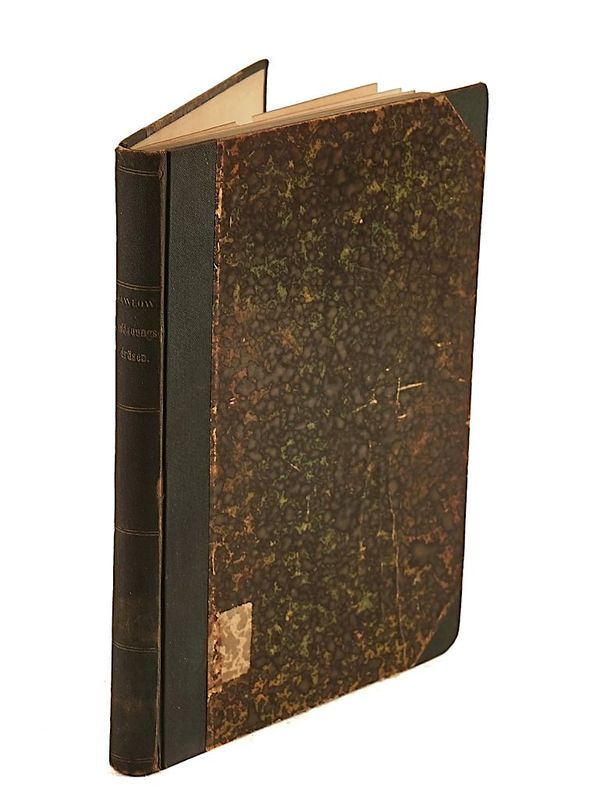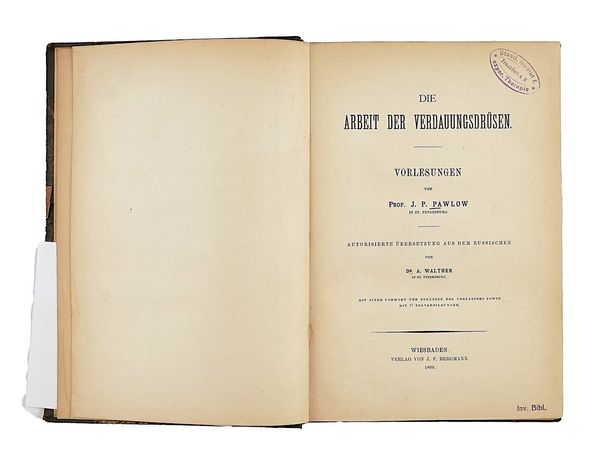PAVLOV, Ivan (1849-1936). Die Arbeit der Verdauungsdrusen, Wiesbaden, 1898, original wrappers. FIRST EDITION IN GERMAN. With another copy in half buckram. (2).
| Estimate: | £300 - £500 |
| Hammer price: | £90 |
PAVLOV, Ivan (1849-1936). Die Arbeit der Verdauungsdrüsen ... Autorisierte Ubersetzung aus dem Russischen. Wiesbaden: Varlag von J. F. Bergmann, 1898. Large 8vo (257 x 175mm). Half title, illustrations, tables and diagrams (some very faint marginal staining). Original pale green printed wrappers (backstrip torn with some loss and repaired with clear adhesive tape, a few small stains, some minor fraying). Provenance: illegible old signatures on upper wrapper; from the Collection of Peter and Margarethe Braune. FIRST EDITION IN GERMAN of this highly important work on conditioned reflexes and automatic responses in dogs which had consequences not only for medicine but for political thought, sociology and psychology, and led to the "behaviourist" view that much human behaviour can be understood as a series of conditioned reflexes. This edition was the first printed in any western language and was published some four years before the first English edition; the first (Russian) edition of 1897, printed in Cyrillic, is excessively rare. "Mouth-watering is a familiar experience and may be induced without the sight or smell of food. The sounds of a table being laid for lunch in another room may induce salivation in man, and the rattle of a dish in which its food is usually served will cause similar reaction in a dog. By detailed analysis of such facts as these Pavlov made great contributions to our knowledge of the physiology of digestion in a series of lectures delivered in St Petersburg and published in the following year. The elaboration of these experiment and their extension to children demonstrated how great a proportion of human behaviour is explicable as a series of conditioned reflexes. Pavlov's results are, indeed, clearly complementary to those of Freud and many regard them as of more fundamental significance. Like Freud's, this was the work of one man and a completely new departure. Pavlov was awarded the Nobel Prize for Medicine in 1905" (PMM). Garrison-Morton 1022; Horblitt 100 Books Famous in Science no. 83; Dibner Heralds no. 135; PMM 385; Waller 7257. With another copy of the same book in contemporary half buckram. (2)



